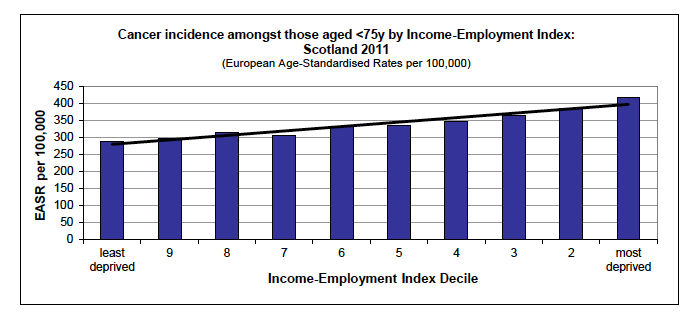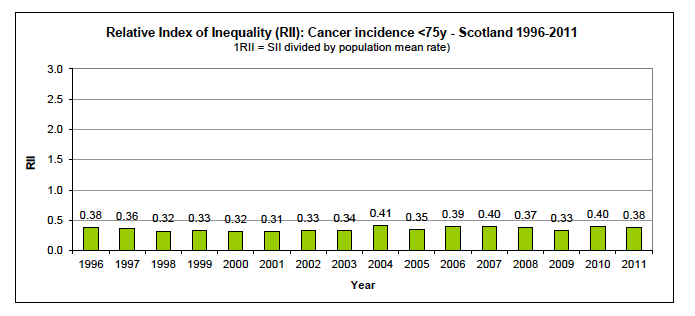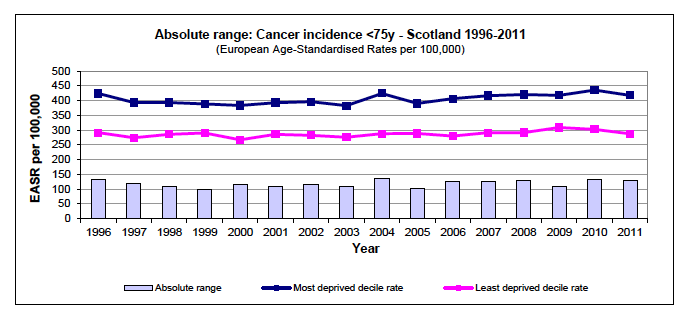Long-term Monitoring of Health Inequalities: Headline Indicators - October 2013
Annual update of the 'Long-term Monitoring of Health Inequalities' headline indicators.
This document is part of a collection
Cancer - incidence rate aged under 75 years
Summary
- Over the long term, inequalities are stable in both absolute and relative terms.
There were more than 20,000 new cases of cancer diagnosed in 2011. The incidence rate remained broadly stable between 1997 and 2007, but has increased slightly in recent years. The incidence of cancer is more common in deprived areas than in less deprived areas of Scotland (418 cases per 100,000 population, compared to 288 per 100,000, in 2011). While there have been short-term fluctuations in both the relative and absolute levels of inequality, there is no clear long-term trend.
Inequalities gradient in the most recent year available

Relative Index of Inequality (RII) over time

Absolute range over time

Scale / context
| Number of new cases |
Target population size |
Rate per 100,000 (EASR) |
|
|---|---|---|---|
| 1996 |
18,129 |
4,754,906 |
345.0 |
| 1997 |
17,163 |
4,740,269 |
326.7 |
| 1998 |
17,106 |
4,729,975 |
322.9 |
| 1999 |
16,917 |
4,721,298 |
318.5 |
| 2000 |
17,131 |
4,708,667 |
321.3 |
| 2001 |
17,143 |
4,703,661 |
319.6 |
| 2002 |
17,525 |
4,690,508 |
324.3 |
| 2003 |
17,563 |
4,690,603 |
321.1 |
| 2004 |
18,146 |
4,706,922 |
329.1 |
| 2005 |
17,971 |
4,718,403 |
322.4 |
| 2006 |
18,150 |
4,734,676 |
323.3 |
| 2007 |
18,749 |
4,755,963 |
331.1 |
| 2008 |
19,431 |
4,775,321 |
338.6 |
| 2009 |
19,971 |
4,795,479 |
343.6 |
| 2010 |
19,971 |
4,816,465 |
340.4 |
| 2011 |
20,002 |
4,841,726 |
337.1 |
Contact
Email: Craig Kellock
There is a problem
Thanks for your feedback